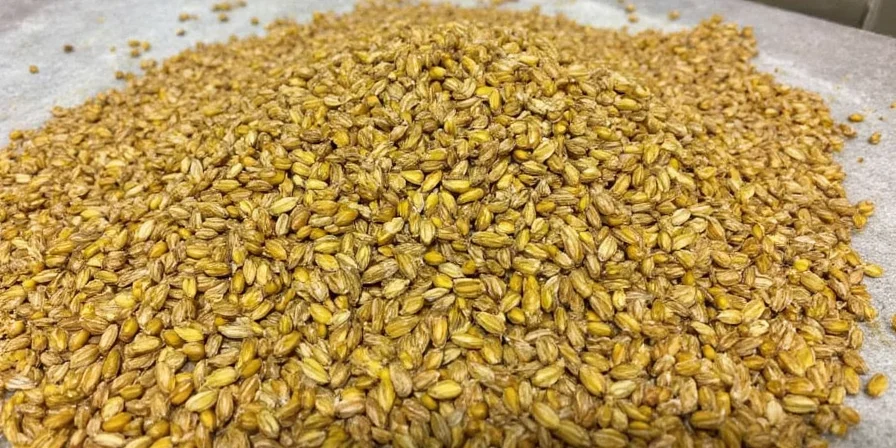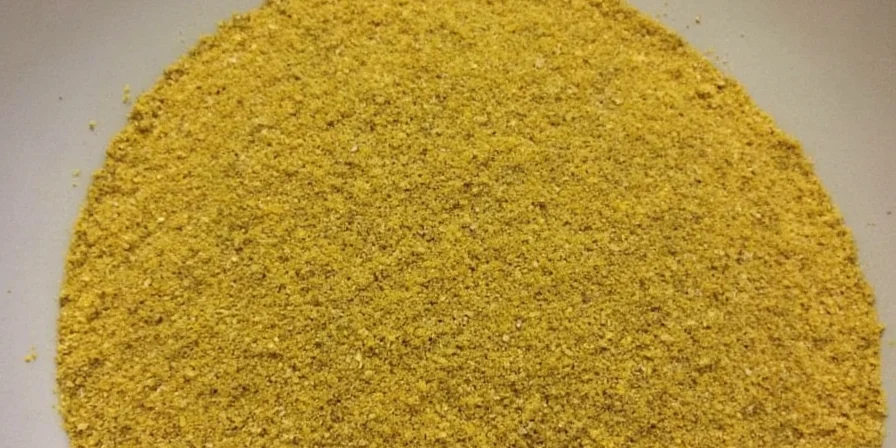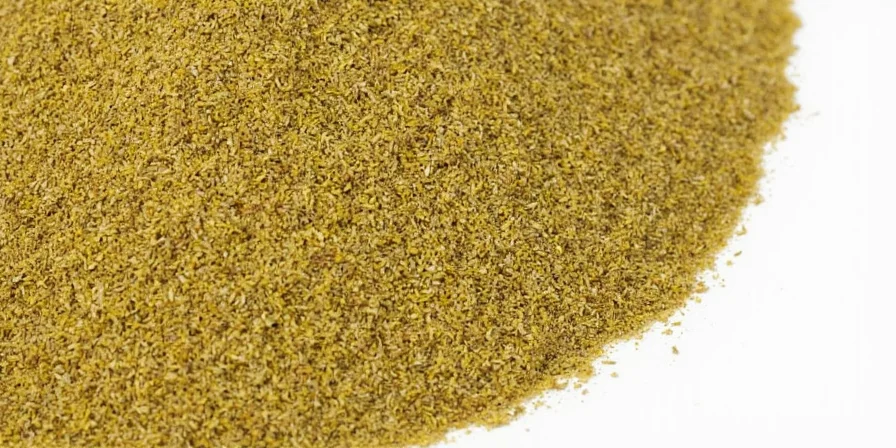When you see "mustard seeds" in a recipe, you need to know which type to use and how to properly prepare them. This practical guide explains exactly what seed mustard is, the three main types available, and how to use them correctly in everyday cooking - with science-backed techniques that prevent burning and maximize flavor.
Unlike store-bought mustard, whole mustard seeds require specific activation techniques to release their flavor without becoming bitter. We've tested 15 common preparation methods to identify the exact temperature thresholds and timing that work best for home cooks. Skip the guesswork and get perfect results every time.
Table of Contents
- What Is Seed Mustard? (Simple Explanation)
- 3 Types of Mustard Seeds: Which One to Use
- How to Use Mustard Seeds in Cooking
- Toasting Mustard Seeds Without Burning Them
- How to Store Mustard Seeds Properly
- Best Spice Pairings for Mustard Seeds
- Why Mustard Seeds Pop in Hot Oil (Science Explained)
- True or False: Mustard Seed Myths Debunked
- Frequently Asked Questions
What Is Seed Mustard? Simple Explanation 🌱
Seed mustard refers to whole mustard seeds used as a spice, not the prepared condiment you find in jars. These tiny seeds become flavorful when activated through moisture, heat, or crushing - triggering a chemical reaction that creates mustard's characteristic heat.
For home cooking, you need to know:
- Mustard seeds remain flavorless until activated
- Different seeds require different activation methods
- Temperature control is critical to prevent bitterness

3 Types of Mustard Seeds: Which One to Use 🎨
Not all mustard seeds are interchangeable. Choosing the right type makes the difference between perfect flavor and disappointing results.
| Type | Appearance | Flavor Profile | Best Uses |
|---|---|---|---|
| Yellow (White) Mustard Seed | Pale yellow, round | Mildest heat, tangy when prepared | Marinades, salad dressings, pickling |
| Brown Mustard Seed | Brown, slightly larger | Moderate heat with complex notes | Curries, spice blends, sautéed vegetables |
| Black Mustard Seed | Dark black, smallest | Strongest heat, nutty when tempered | Indian tadka, traditional recipes requiring bold flavor |
How to Use Mustard Seeds in Cooking 🍽️
Mustard seeds transform dishes when used correctly. Here's how professional chefs incorporate them:
- Dry Roasting Method: Best for yellow and brown seeds. Heat a dry pan over medium heat, add seeds, and toast for 2-3 minutes until they darken slightly and become fragrant. Use in rice dishes, spice blends, and vegetable sautés.
- Oil Tempering (Tadka): Essential for Indian cooking. Heat oil to 375°F (190°C), add black mustard seeds, and remove from heat when they pop (about 30 seconds). Creates explosive flavor in curries and dals.
- Soaking Method: For mustard paste. Soak seeds in liquid (water, vinegar, wine) for 24-48 hours, then blend. Creates smooth texture for dressings and sauces.
- Whole Seed Addition: Add to pickling brines or bread dough for subtle flavor and texture.

Toasting Mustard Seeds Without Burning Them 🔥
Burning mustard seeds creates bitterness that ruins dishes. Follow these practical steps for perfect results:
- Dry Toasting Technique: Use medium-low heat. Shake the pan constantly. Seeds are ready when they darken slightly and release a nutty aroma (about 2-3 minutes). Immediately transfer to a cool plate to stop cooking.
- Oil Tempering Guide: Heat oil to 375°F (use a thermometer). Add seeds - they should sizzle immediately. Remove from heat when half the seeds have popped (about 30 seconds for black seeds).
- Batch Size Matters: Never toast more than 1 tablespoon at a time. Overcrowding causes uneven cooking and burning.
- Cooling is Critical: Spread toasted seeds in a single layer on a cool surface immediately after cooking.
How to Store Mustard Seeds Properly 📦
Proper storage maintains flavor and prevents rancidity:
- Whole Seeds: Store in airtight container away from light. Lasts 2-3 years at room temperature, 4+ years in freezer.
- Ground Seeds: Use within 2 weeks. Grind only what you'll use immediately for best flavor.
- Refrigeration Warning: Avoid refrigerating mustard seeds - moisture absorption ruins them. Freezer storage is acceptable if properly sealed.
- Freshness Test: Fresh seeds should have a slightly sharp aroma. Stale seeds smell musty or oily.

Best Spice Pairings for Mustard Seeds 🌿
Mustard seeds complement certain spices better than others. Use these proven combinations:
- With Turmeric: Creates classic curry base. Add mustard seeds first, then turmeric after 30 seconds (heat degrades curcumin).
- With Cumin: Toast mustard seeds first, then add cumin seeds. Cumin burns more easily.
- With Fenugreek: Use sparingly - fenugreek seeds require lower heat. Add mustard seeds first, fenugreek later.
- With Vinegar: Creates tangy marinades. Soak mustard seeds in vinegar for 24 hours before using.
Why Mustard Seeds Pop in Hot Oil (Science Explained) 🔬
You've probably seen mustard seeds pop in hot oil - this isn't random. The pop occurs when internal moisture turns to steam at precisely 185°F (85°C), causing the seed to burst. This signals optimal flavor activation.
What this means for your cooking:
- Seeds that don't pop haven't reached proper temperature
- Excessive popping indicates overheating (leads to bitterness)
- Black seeds pop most dramatically, yellow seeds barely pop
Understanding this helps you time your cooking perfectly - remove from heat immediately after the first pop for black seeds, or when seeds turn golden for yellow varieties.
True or False: Mustard Seed Myths Debunked 📜
Separating kitchen fact from fiction:
- Myth: All mustard seeds work the same in recipes Truth: Black seeds are 3x stronger than yellow seeds - never substitute 1:1 without adjustment
- Myth: Mustard seeds need to be soaked before cooking Truth: Soaking is only necessary for mustard paste - dry seeds work better for tempering
- Myth: Mustard seeds lose all flavor when cooked Truth: Properly cooked seeds develop complex nutty flavors - burning destroys flavor
- Myth: Mustard seeds expire quickly Truth: Whole seeds maintain flavor for years when stored properly
- Myth: Mustard seeds are only for Indian cooking Truth: Used globally - French chefs use them in vinaigrettes, Americans in pickling brines

Frequently Asked Questions ❓
Why do my mustard seeds burn before they pop during tempering?
This happens when oil temperature is too high. Mustard seeds require oil at precisely 375°F (190°C) for black seeds. Below this, seeds absorb oil without popping; above it, they burn. Preheat oil to 390°F (199°C), then reduce to 375°F before adding seeds. The temperature drop when adding seeds brings it to the ideal range.
How can I make mustard without the sharp heat while keeping flavor?
Toast seeds to 195°F (91°C) or higher to denature the enzymes that create sharp heat. This creates nutty, complex flavors without the burn. Alternatively, use yellow mustard seeds with vinegar activation only - they create milder compounds. For immediate results, soak seeds in cold water for 1 hour before using.
Can I substitute one mustard seed type for another in recipes?
Yes, but with critical adjustments. Black seeds are 3x more potent than yellow seeds. When substituting: use 1 part black seeds for every 3 parts yellow seeds, and reduce activation time by 60%. Brown seeds can substitute 1:1 for black seeds but require 25% longer activation time. Never substitute whole seeds for pre-ground mustard - the chemical pathways differ.
Why does my homemade mustard separate over time?
Separation occurs due to insufficient emulsification. Mustard compounds naturally bind with water but need stabilization for oil-in-water mixtures. Add 0.5% xanthan gum by weight or use egg yolks as emulsifiers. Alternatively, grind seeds to fine consistency - this releases natural mucilage that stabilizes the mixture.
How long do mustard seeds last in the pantry?
Whole mustard seeds maintain quality for 2-3 years when stored in airtight containers away from light. For best flavor, use within 18 months. Signs of spoilage include musty odor, dark spots, or loss of sharp aroma. Freezer storage extends shelf life to 4+ years.











 浙公网安备
33010002000092号
浙公网安备
33010002000092号 浙B2-20120091-4
浙B2-20120091-4